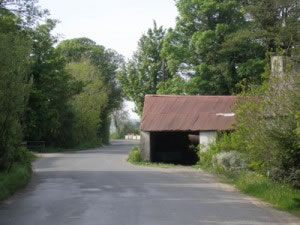Bad luck and bad timing (a few days before Christmas) with our electric shower, gave me an opportunity lately to put my ‘make do and mend’ impulses to work. Anybody who knows me will know I am wont to spending Friday evening fixing the brakes or straightening a wheel on my bike. We are often too quick to replace rather than repair domestic appliances and something in my nature resists that, if there might be a chance to open up and fix instead.
Cold water continued to flow through the shower at a great rate after I switched it off, so it was obvious that a valve of some kind had given up. Luckily I had a cut- off valve on the supply pipe to the shower, so a quick trip to the attic stopped the flow. Still, after taking the cover of the shower and staring at it blankly for a while, I knew it was a job for an expert as any attempted repair by me would likely lead to flooding or electrocution (or both) so I decided it would be best to call The Shower Man.
Tim www.showerman007.com/ , had a good look and said that there weren’t any of the usual signs of wear and tear on it, and that there was no need to replace it yet. Good, that was about €200 saved. Tim explained that it was teenagers who kept him in work- electric showers are designed to run for 15 minutes and cool for 45 minutes, but it’s the other way around when it comes to our young ones leading to a shortened lifespan for the shower unit.
Tim showed me that the filter on the solenoid had started to break up, and it was likely that a small piece of that had jammed the valve open. After replacing the part and opening the valve on the supply pipe, the shower was ready for (hopefully) another few years of action, teenagers notwithstanding. The charge for the callout and replacement part was very reasonable considering the amount I could have spent on a new shower, and the whole operation only took around half an hour.
A few helpful hints then based on my own experience:
- If you are in the process of building a house or a bathroom extension, have the plumber fit a cut- off valve on the water supply pipe to the shower. To avoid pressure problems, electric showers are usually fed off the mains supply to the house, rather than from your water storage tank. Without a cut- off valve on the supply pipe, you may have to cut off the water mains supply to the house in the event of a problem with the shower unit. That would be a huge nuisance at the best of times but definitely not something you want to face a few days before Christmas.
- Don’t assume that an older shower unit is finished if it starts to give trouble- a specialist in shower repairs could save you a fair amount of money by replacing a part rather than the whole unit (legitimate funds for bike parts).
- Go easy on the shower- nobody needs to be that clean!







